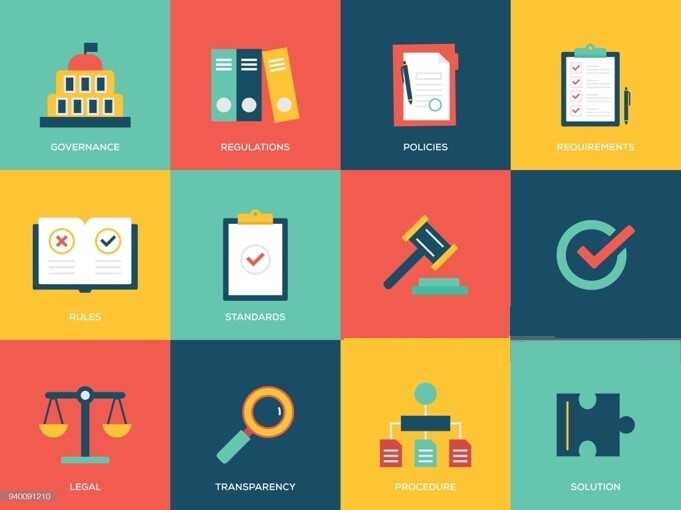
The Metaverse is a term used to describe a virtual world where people can participate in various digital experiences, such as social interactions, gaming, and commerce, among others.
It is an immersive and interactive shared space that people can engage with digitally. The Metaverse is a new concept that is still developing and is associated with advanced technologies like Virtual Reality (VR), Augmented Reality (AR), and Artificial Intelligence (AI).
The Metaverse has the potential to transform the internet by offering a more engaging online experience beyond traditional browsing. Some people envision it as a parallel digital universe, while others see it as a way to enhance aspects of our lives like education, work, and entertainment.
Overall, the Metaverse has the potential to change the way we interact with technology and each other digitally.
Sounds too good to be true?
The concept of the Metaverse is an exciting and promising idea, but like any emerging technology, it is not without its challenges and limitations. While the Metaverse has the potential to transform the way we interact with digital technology, it is still in its early stages of development and faces several technological, social, and ethical hurdles that must be overcome before it becomes a reality.
Biggest hurdles
Lack of Standards

The lack of standards is a significant challenge for the Metaverse industry. Currently, there is no universally accepted set of standards for building and operating virtual worlds within the Metaverse. This means that different platforms and developers may use different technologies, tools, and protocols to create their virtual experiences. As a result, it can be difficult for businesses to create immersive experiences that work across different platforms and for users to navigate between them seamlessly.
This lack of standardization also creates challenges for interoperability and collaboration within the Metaverse. Without a common language or set of protocols, virtual worlds and platforms may struggle to communicate and interact with each other effectively. This can limit the possibilities for creating shared experiences and building a cohesive Metaverse ecosystem.
Addressing the lack of standards will require collaboration and coordination among industry stakeholders, including developers, businesses, and standards organizations. Developing and adopting common standards for building and operating virtual worlds within the Metaverse will be critical to unlocking the full potential of this emerging technology.
Cost and Technical Barriers

Cost and technical barriers are significant challenges that businesses face when adopting the Metaverse. Building immersive virtual experiences can be expensive, and it requires specialized technical expertise. Businesses may need to invest in hardware, software, and infrastructure to create virtual environments that can support large numbers of users and provide a high level of interactivity.
The technical expertise required to build and operate virtual environments within the Metaverse can also be a barrier for businesses, particularly for smaller organizations with limited resources. Developing immersive virtual experiences may require skills in areas such as 3D modelling, programming, and game design, which can be difficult and expensive to acquire.
Another factor that can contribute to the cost and technical barriers is the need to keep up with emerging technologies and trends. The Metaverse is a rapidly evolving space, with new tools, platforms, and techniques emerging all the time. Businesses that want to remain competitive in the Metaverse may need to invest in ongoing research and development, which can be costly and time-consuming.
To address these challenges, businesses may need to consider partnerships and collaborations with technology providers, developers, and other stakeholders in the Metaverse ecosystem. These partnerships can provide access to expertise, infrastructure, and resources that may be difficult for businesses to acquire on their own. Additionally, businesses can consider leveraging existing platforms and tools to create virtual experiences, rather than building their own from scratch. This can help reduce costs and technical barriers while still allowing businesses to take advantage of the opportunities that the Metaverse offers.
Limited Use Cases

Many businesses may not fully understand the potential of the Metaverse or how it can be used to improve their operations or customer experiences. The concept of the Metaverse is still relatively new, and there is a lack of practical examples that businesses can use to understand the technology's potential. This can make it difficult for businesses to identify how the Metaverse can benefit their specific industry or operations.
To overcome this challenge, businesses must invest time in researching the Metaverse and understanding its capabilities. This may involve collaborating with experts in Metaverse development, attending industry events, and seeking out case studies from businesses that have already adopted the technology.
Also, the Metaverse may not be suitable for all industries. Some businesses may struggle to find relevant use cases for the technology, while others may need to invest heavily in adapting their products or services to the Metaverse environment. For example, a traditional brick-and-mortar retailer may find it challenging to adapt their business model to the Metaverse, while a gaming company may find it easier to integrate Metaverse technology into their existing operations.
To address this challenge, businesses must carefully evaluate their operations and identify how the Metaverse can benefit their industry or specific use cases. This may involve conducting market research, collaborating with experts in Metaverse development, and seeking out case studies from businesses in similar industries.
Concerns around Privacy and Security

Concerns around privacy and security can be a significant hindrance to the adoption of the metaverse in businesses. The metaverse is a virtual world that involves sharing personal information, interacting with other users, and engaging in various activities. As a result, there are significant risks to privacy and security that must be addressed to ensure the safety and protection of users.
One of the primary concerns around privacy in the metaverse is the potential for data breaches and cyber-attacks. Businesses that operate in the metaverse are responsible for collecting and storing sensitive user data, including personal information, financial data, and login credentials. If this data falls into the wrong hands, it can be used for malicious purposes such as identity theft, financial fraud, or cyberbullying.
Another concern around privacy in the metaverse is the potential for unauthorized access to user data by third parties. For example, virtual reality headset manufacturers may collect and store data on user behavior and preferences, which could be used for targeted advertising or other purposes without the user's consent.
Security is another critical concern in the metaverse, as virtual worlds can be vulnerable to hacking, malware, and other forms of cyber-attacks. Hackers could potentially steal valuable virtual assets, such as virtual currency or virtual real estate, which could result in significant financial losses for businesses.
To overcome these barriers, businesses must invest in robust security measures, such as encryption, firewalls, and anti-malware software, to protect user data and assets. Additionally, businesses must ensure that they are compliant with relevant data protection and privacy regulations to avoid potential legal consequences. Finally, businesses should be transparent with users about their data collection and usage practices to build trust and ensure user confidence in the metaverse.
Limited Access
.jpeg)
Limited access to technology can be a significant hindrance in the adoption of the metaverse in businesses. The metaverse requires high-end hardware, software, and networking capabilities, including powerful computers, fast internet connections, and advanced virtual reality equipment. Businesses that do not have access to this technology may find it challenging to integrate the metaverse into their operations.
For example, businesses that are operating in remote or underdeveloped areas may have limited access to high-speed internet, making it difficult for them to access and use the metaverse. Similarly, businesses that are operating on a tight budget may not have the resources to invest in the necessary technology and infrastructure required to participate in the metaverse.
For example, businesses that are operating in remote or underdeveloped areas may have limited access to high-speed internet, making it difficult for them to access and use the metaverse. Similarly, businesses that are operating on a tight budget may not have the resources to invest in the necessary technology and infrastructure required to participate in the metaverse.
To overcome these barriers, businesses may need to invest in upgrading their technology and infrastructure or seek out partnerships with technology providers and service providers that can help them access the necessary resources. Additionally, governments and other organizations can play a role in promoting access to technology and developing the necessary skills to support the adoption of the metaverse in businesses.
Conclusion
In conclusion, the metaverse represents an exciting new frontier for businesses, offering endless possibilities for immersive experiences, virtual collaboration, and innovative customer engagement. However, the adoption of the metaverse is not without its challenges and hurdles, including technical barriers, limited access to technology, concerns around privacy and security, and regulatory compliance.
To fully realize the potential benefits of the metaverse, businesses must invest in upgrading their technology and infrastructure, partner with technology providers and service providers, and ensure compliance with data protection and privacy regulations. Additionally, businesses must be transparent with users about their data collection and usage practices and implement robust security measures to protect user data and assets.
Despite these challenges, the metaverse offers a promising opportunity for businesses to create new revenue streams, reach new audiences, and enhance their brand image. By overcoming the hurdles and embracing the potential of the metaverse, businesses can stay ahead of the curve in the rapidly evolving digital landscape and unlock a new era of virtual innovation and collaboration.
About Coforge
Coforge is a global digital services and solutions provider, that enables its clients to transform at the intersect of domain expertise and emerging technologies to achieve real-world business impact.
We can help refine your problem statement, crystallize the benefits, and provide concrete solutions to your problems in a collaborative model.
We would love to hear your thoughts and use cases. Please reach out to Coforge CTO Office to begin a discussion.
Authors

Deepak Saini
Deepak Saini is AVP, Digital Services, Coforge Technologies. He has 23 years of IT experience with strong technology leadership experience in Machine Learning, Deep Learning, Generative AI, NLP, Speech, Conversational AI, Contact Center AI, Responsible AI.

Khushboo Goyal
Khushboo Goyal is a Technical Architect, CTO Office, Coforge Technologies. She has 14+ years of IT experience in the domain of Banking & Finance, Intellectual property rights and insurance. She has strong technology experience in the fields of Cloud, Conversational AI, Metaverse, Augmented Reality and Virtual Reality.

Khushboo Goyal is a Senior Consultant at Coforge with over 18 years of industry experience. A specialist in Agentic AI and Generative AI, she focuses on building autonomous frameworks, Virtual Assistants, and advanced RAG architectures. With a strong foundation in Machine Learning, Khushboo Goyal consults in strategic AI initiatives to deliver high-impact, practical enterprise solutions.
Related reads.
About Coforge.
We are a global digital services and solutions provider, who leverage emerging technologies and deep domain expertise to deliver real-world business impact for our clients. A focus on very select industries, a detailed understanding of the underlying processes of those industries, and partnerships with leading platforms provide us with a distinct perspective. We lead with our product engineering approach and leverage Cloud, Data, Integration, and Automation technologies to transform client businesses into intelligent, high-growth enterprises. Our proprietary platforms power critical business processes across our core verticals. We are located in 23 countries with 30 delivery centers across nine countries.

